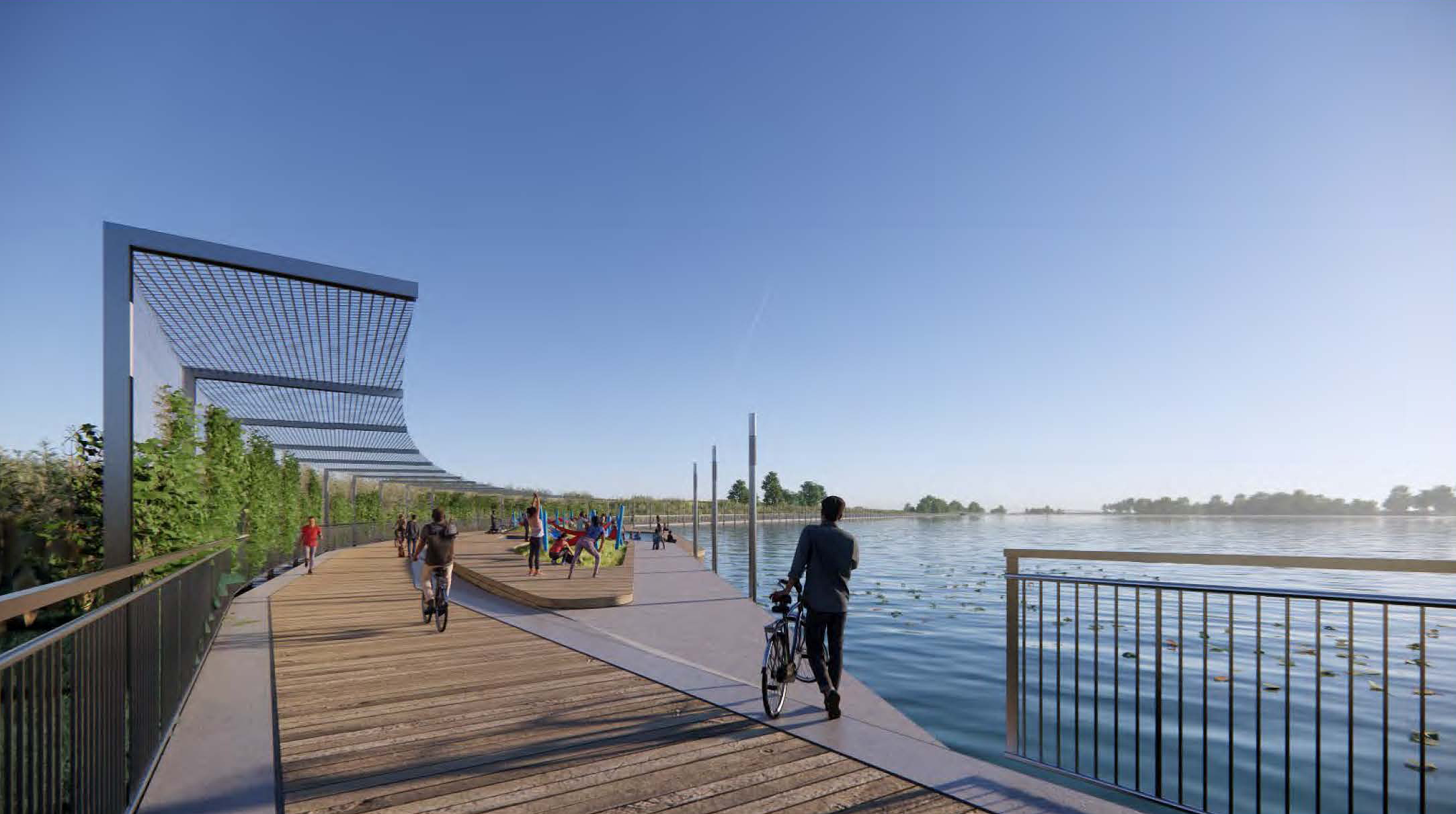H1 Lake Calumet Trail Feasibility Study
About This Project
Stakeholders for this trail envision a high quality, low-stress transportation and recreation facility for walking, bicycling, sightseeing, improved access to open space, natural resources, and the scenic beauty of the Lake Calumet area. Stakeholders strive to create exciting, memorable places that are accessible to residents, visitors, and increase opportunities for outdoor recreation and an improved connection and stewardship for natural resources, species and habitat. The purpose of this study was to identify a feasible alignment for the construction of a shared use path on and around Lake Calumet to better connect neighborhoods of the south side of Chicago through the Illinois International Port District (IIPD), Big Marsh Park, and take part in the growth of the regional trail network in the Calumet Region of Illinois and Indiana. A proposed trail would connect to existing and planned facilities at both ends, with logical termini that seek to maintain a high quality, low-stress corridor.
Problem: To create these connections, the trail had major barriers to cross including I-94, Lake Calumet, Norfolk Southern Railroad and Stony Island Avenue. The IIPD requested the trail not impact port operations or the Harborside International Golf Center. They were concerned about trail users leaving the trail and trespassing on IIPD property or disturbing the sensitive Harborside Marsh Pond north of Lake Calumet, which consists of high quality wetlands and natural habitat. This natural area will be the draw for trail users. We had to create a cost effective alignment that preserved the currently off-limits natural areas, but allowed adjacent access to them at the same time.
Solution: To meet these challenges, Epstein explored the use of a floating trail and found that the cost would be somewhere between an on-grade trail and a trail on structure. We researched construction, material and type of floating docks paired with a concrete surface. We worked closely with dock manufacturers to develop a solution that could be scaled up to a nearly one-mile length of floating trail. We explored methods of anchoring and tethering, its resistance to impact, changes in lake levels, wave action, safety, accessibility comfort, and transitions to on-grade trails. The public engagement was robust with an online public survey promoted by local civic organizations, community groups, Friends of Big Marsh and Southside Trail Blazers. Individual stakeholder meetings were conducted with fourteen different stakeholder groups and elected officials to gather input on desirable amenities, community benefits, concerns and barriers to accessing the trail. From public engagement, it was determined this trail would be a destination in itself. Thus, we felt it was important to offer amenities and points of interest along the trail for stopping and enjoying the natural beauty of the area. The study explores various rest areas along the trail that could be added in stages as funding becomes available, or at the start of the project.
Coordination with transportation and resource agencies was a key success factor to making these connections. These agencies included the Illinois Department of Transportation, Cook County Department of Transportation and Highways, Chicago Department of Transportation, Illinois International Port District, and the Chicago Park District.



